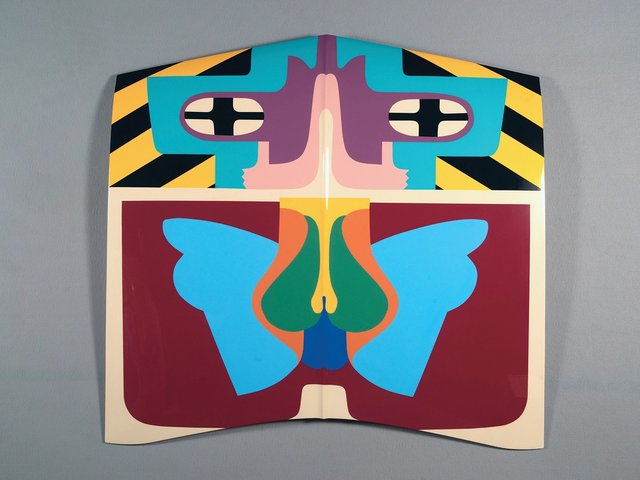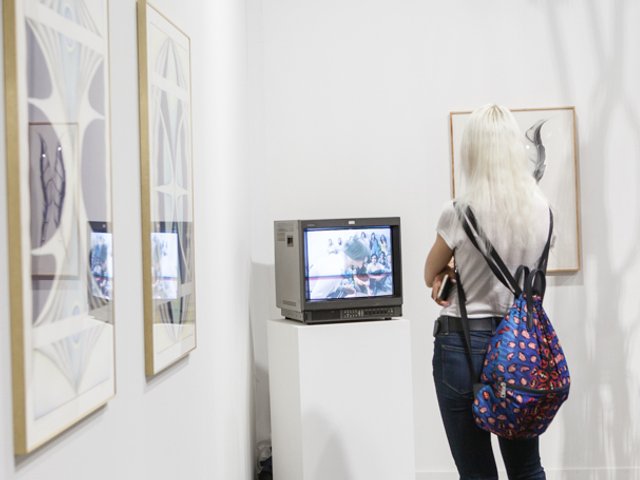Tapestries, which date back to at least the Hellenic period, have historically been valued for their portability—which might make them an ideal medium for today’s collectors jetting out of Miami after the fair. Textiles including tapestries are omnipresent at Art Basel in Miami Beach, where contemporary artists have made different uses of the medium, whether repurposing commercially made tapestries, weaving works themselves or having pieces produced by masters of the art.
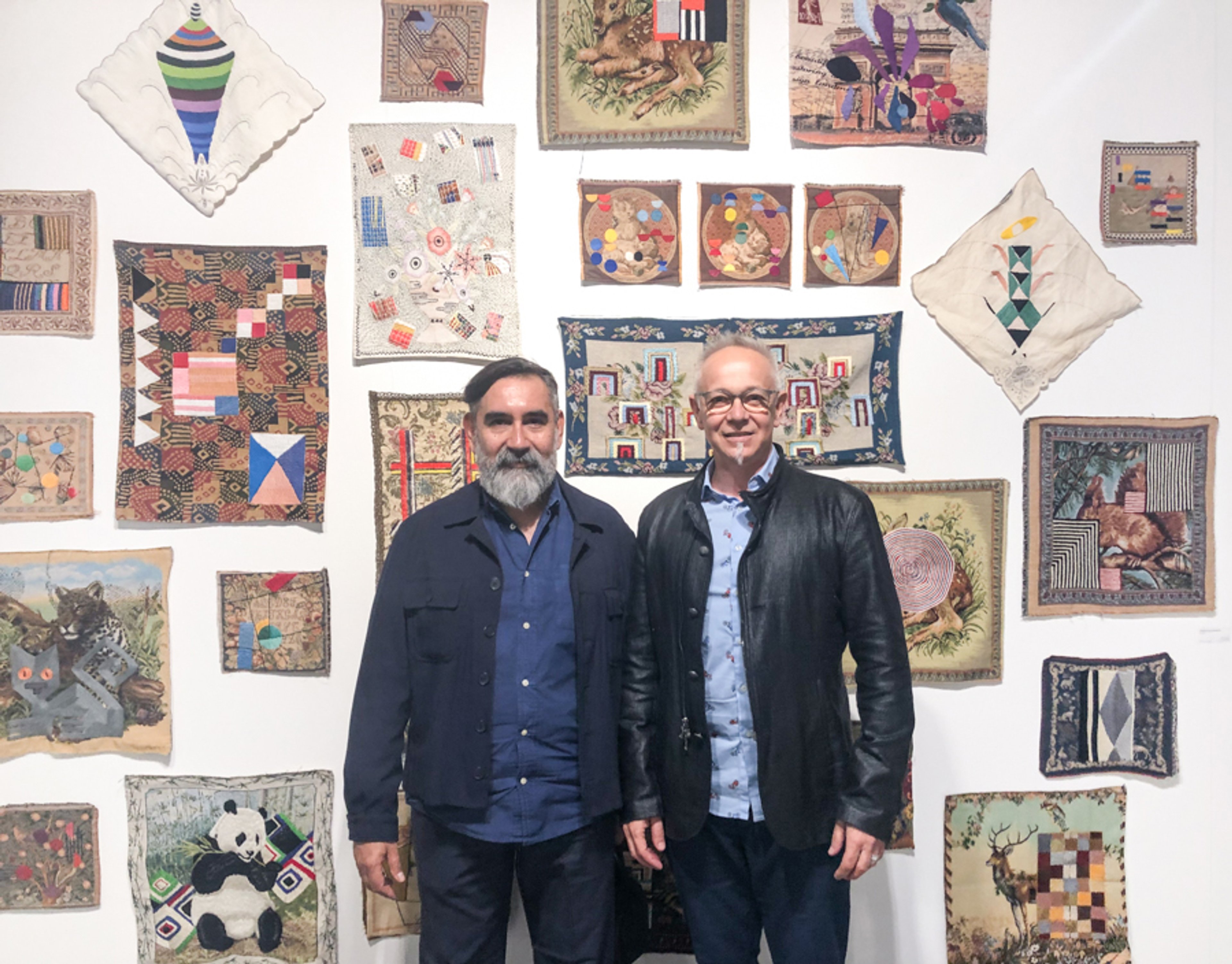
The Argentine artists Leo Chiachio and Daniel Giannone trained as painters, but primarily work in embroidery. They repurpose commercial tapestries, found in secondhand shops or given by family and friends, as canvases. “Each piece has a history,” Chiachio says. They refer to works by female Modern artists such as Sonia Delaunay and Anni Albers, using a historically female medium. “It’s like a double homage to women,” says Valeria Pecoraro of the Buenos Aires-based gallery. Chiachio & Giannone, Pared Bordada (embroidered wall) $1,500-$3,000 each, Ruth Benzacar Galeria de Arte. Photo: © Vanessa Ruiz
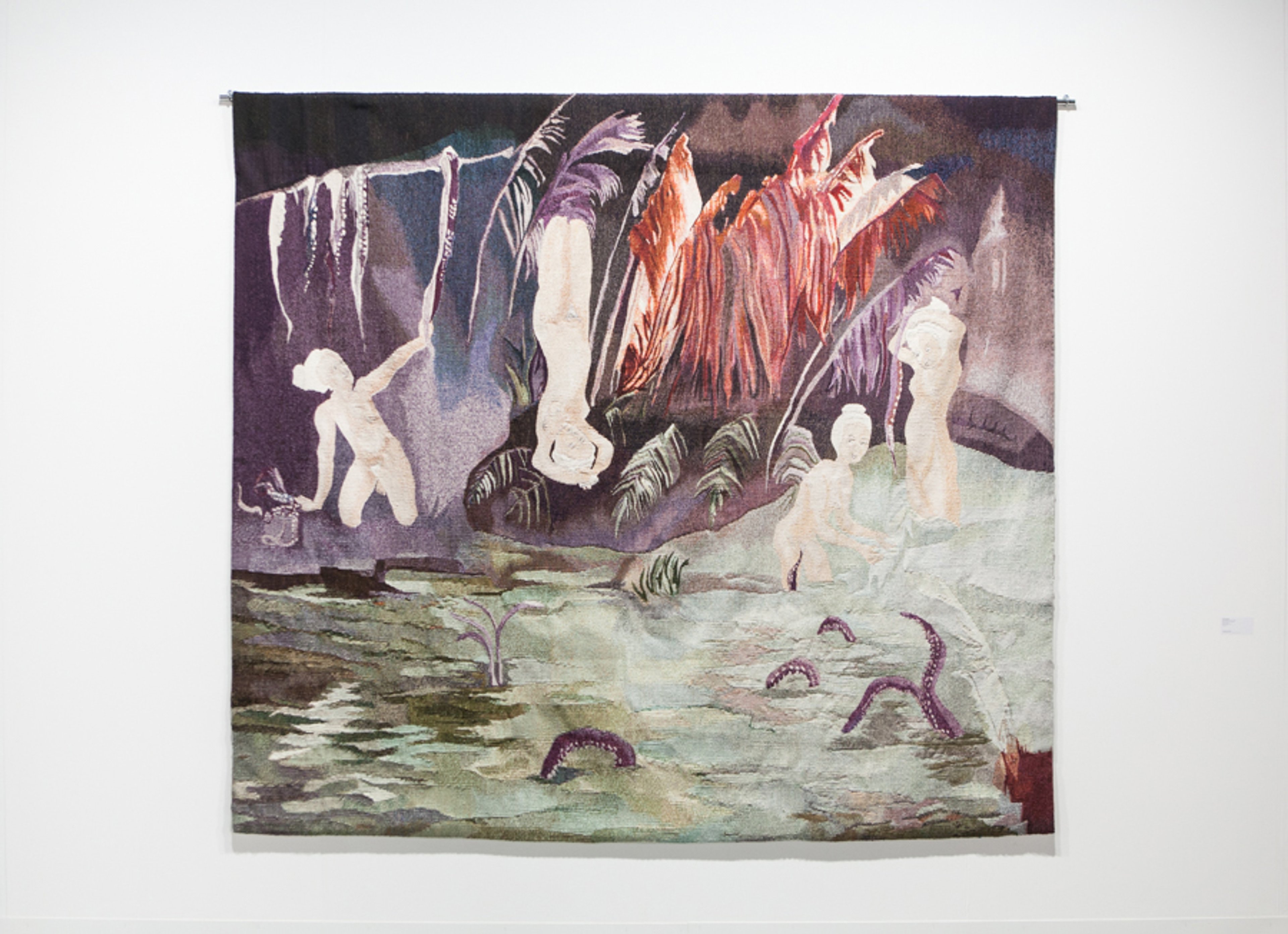
The influence of Old Masters can clearly be seen in the paintings, embroideries and sculptures created by the Iran-born, Belgium-based artist. This wool tapestry, hand-woven in Mexico, is an example of one of her “almost mythical landscapes”, says Julie Senden of Belgium’s Rodolphe Janssen gallery. “It’s a whole universe she’s building.” The worlds Khatibi creates, Senden adds, are almost exclusively populated by women. Both sensual and somewhat frightening and grotesque, the work exemplifies how the artist looks at the relationship between fear and desire. Sanam Khatibi, The hollow in the ferns (2016) $30,000, Rodolphe Janssen. Photo: © Vanessa Ruiz
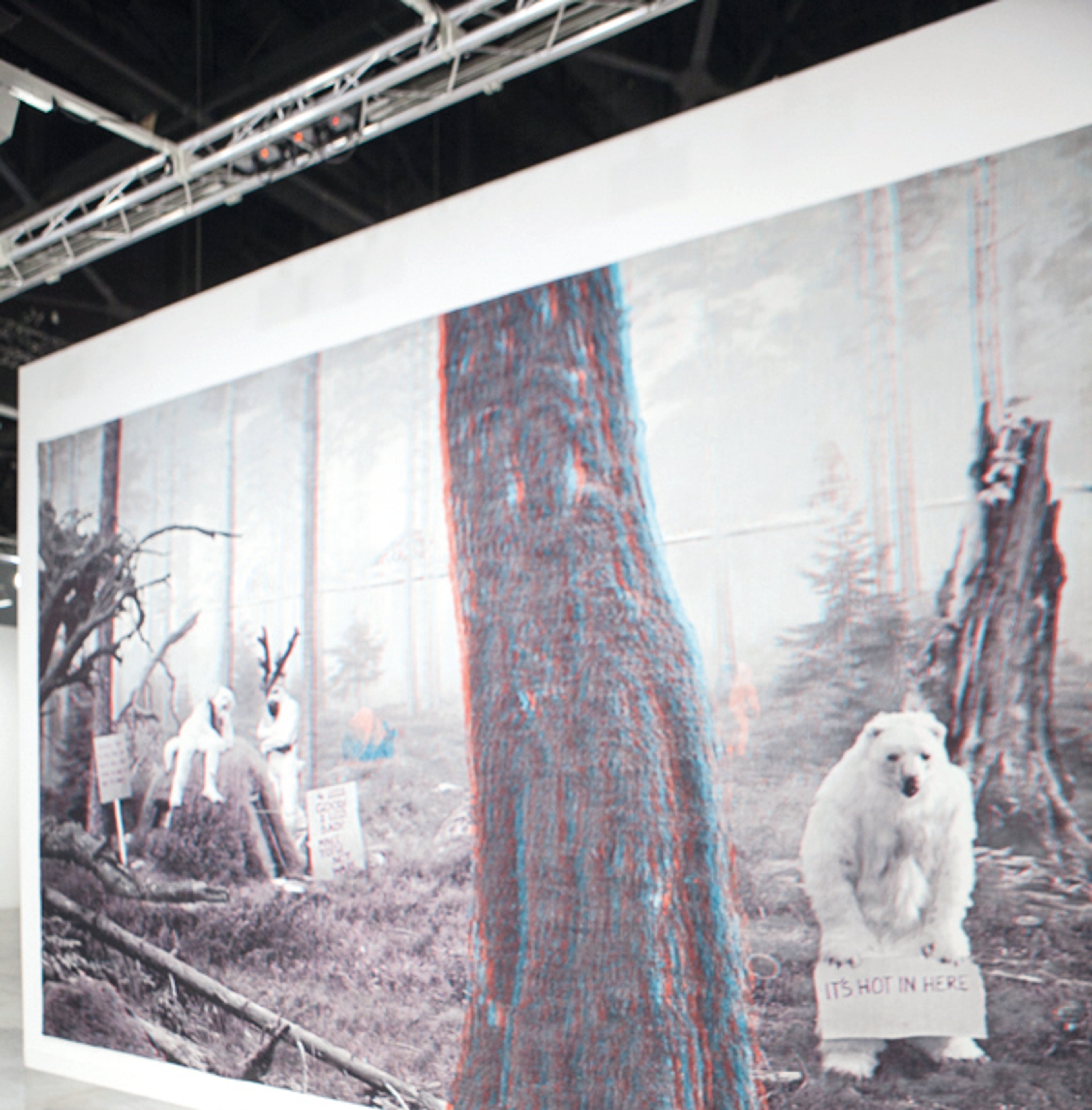
The Poland-born, UK-based artist has previously made works in tapestry, which she “uses for its relationship to narrative and storytelling”, says the New York-based gallery’s Andrew Fitzgerald. This piece, an edition of five that was made in Belgium, refers to human-led environmental destruction, using what appear to be animals that have come from a protest. It also breaks new ground as the first in a 3D series. “The 3D effect mimics a past understanding of an image of the future, as seen through sci-fi design and imagery,” Macuga says. Goshka Macuga, Make Tofu Not War (2018) €90,000, Andrew Kreps Gallery. Photo: © Vanessa Ruiz
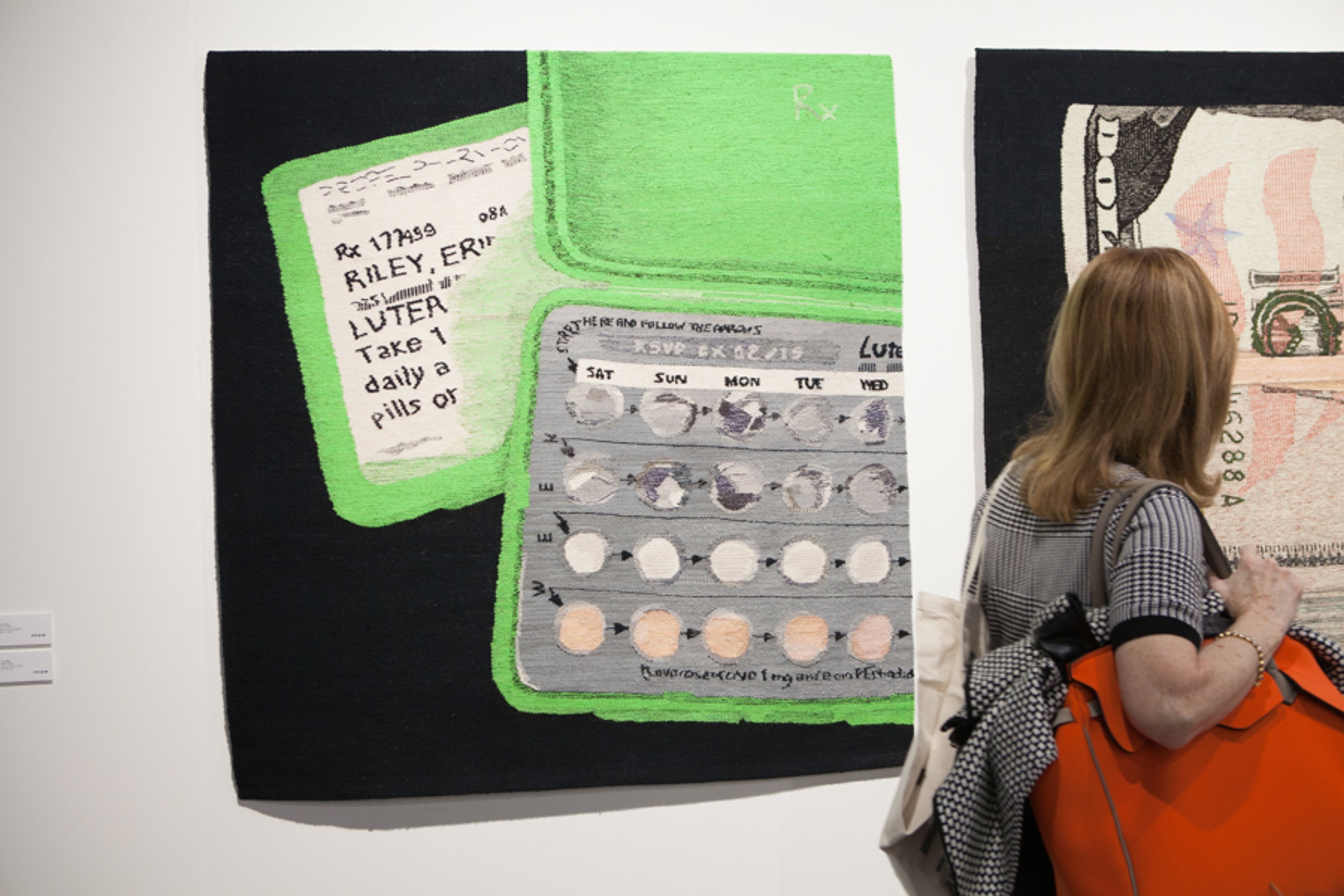
The Brooklyn-based artist’s works are “often diaristic”, says Trey Hollis of the New York gallery P.P.O.W. A case in point is this depiction of the crumpled plastic of a birth-control pill packet, which alludes to Riley’s romantic life. Hollis says that the details captured in the piece show how the artist “challenges herself like a painter to represent light”. Riley, who hand-dyes the wool in all of her works, classifies the cotton-and-wool piece as a tapestry, even though it was made on a 48-inch standard loom instead of the type used for larger wall hangings. Erin Riley, The Pill (2018) $10,000, P.P.O.W. Photo: © Vanessa Ruiz
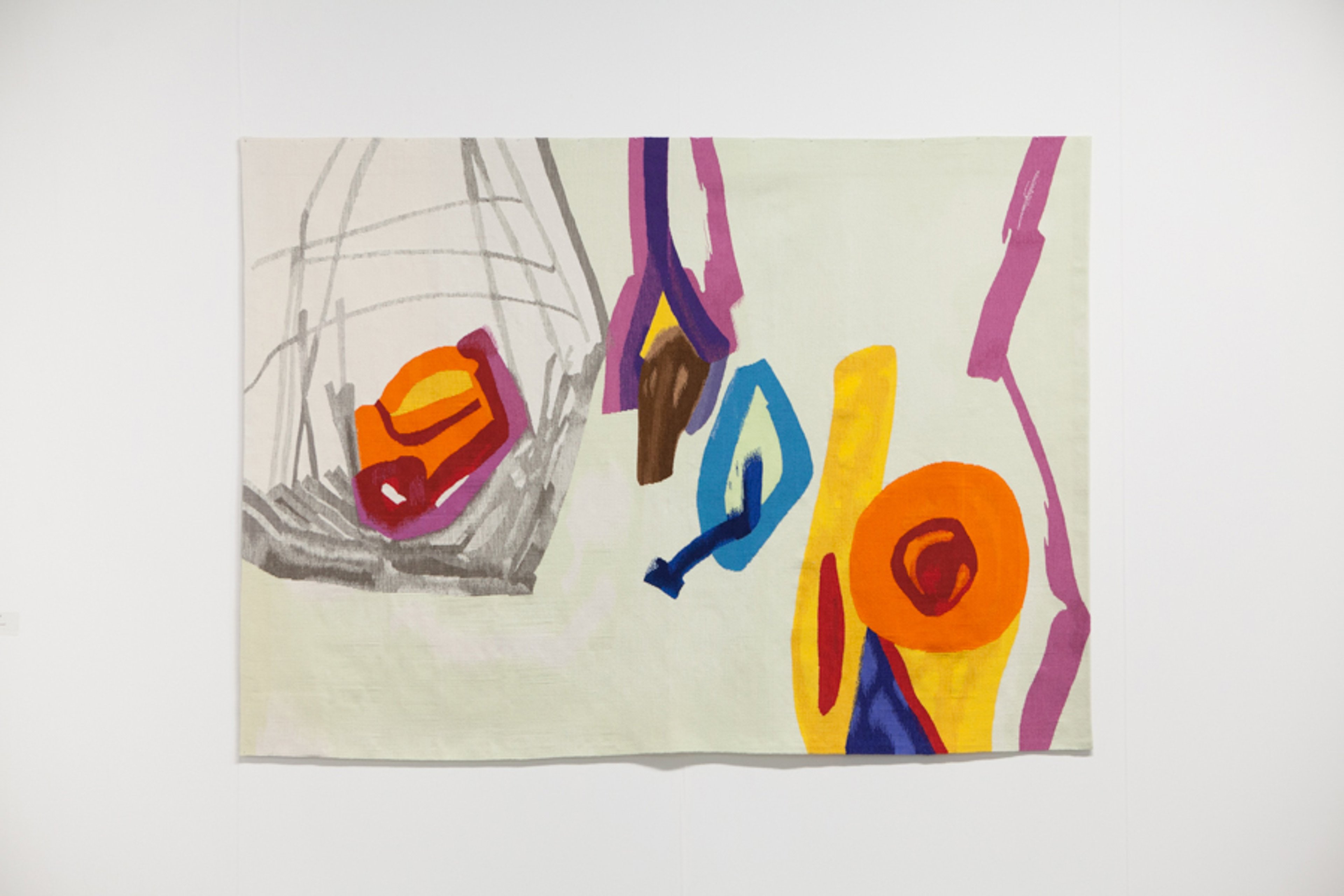
The Lebanese-American artist began to design tapestries in the 1950s, but this is probably “the least researched [part] of her practice”, says Sven Christian Schuch of Galerie Sfeir-Semler. “You have to compose completely differently” when a work is destined to be a tapestry, he says. “It’s a complete other art.” Adnan designed this work in 1967, and it was executed by hand, in wool, just last year in an edition of three by master weavers in the Ateliers Pinton—one of the workshops in Aubusson-Felletin, a centre of tapestry production in France for six centuries. The artisans “really get all the little notes” Adnan made in marker pen on her cartoon, Schuch says. Etel Adnan, Voyageur (1967/2018) €70,000, Galerie Sfeir-Semler. Photo: © Vanessa Ruiz
The Argentine artists Leo Chiachio and Daniel Giannone trained as painters, but primarily work in embroidery. They repurpose commercial tapestries, found in secondhand shops or given by family and friends, as canvases. “Each piece has a history,” Chiachio says. They refer to works by female Modern artists such as Sonia Delaunay and Anni Albers, using a historically female medium. “It’s like a double homage to women,” says Valeria Pecoraro of the Buenos Aires-based gallery. Chiachio & Giannone, Pared Bordada (embroidered wall) $1,500-$3,000 each, Ruth Benzacar Galeria de Arte. Photo: © Vanessa Ruiz
In pictures: tapestries are on trend at Art Basel in Miami Beach
From repurposing commercially made tapestries to weaving works themselves, contemporary artists take on textiles
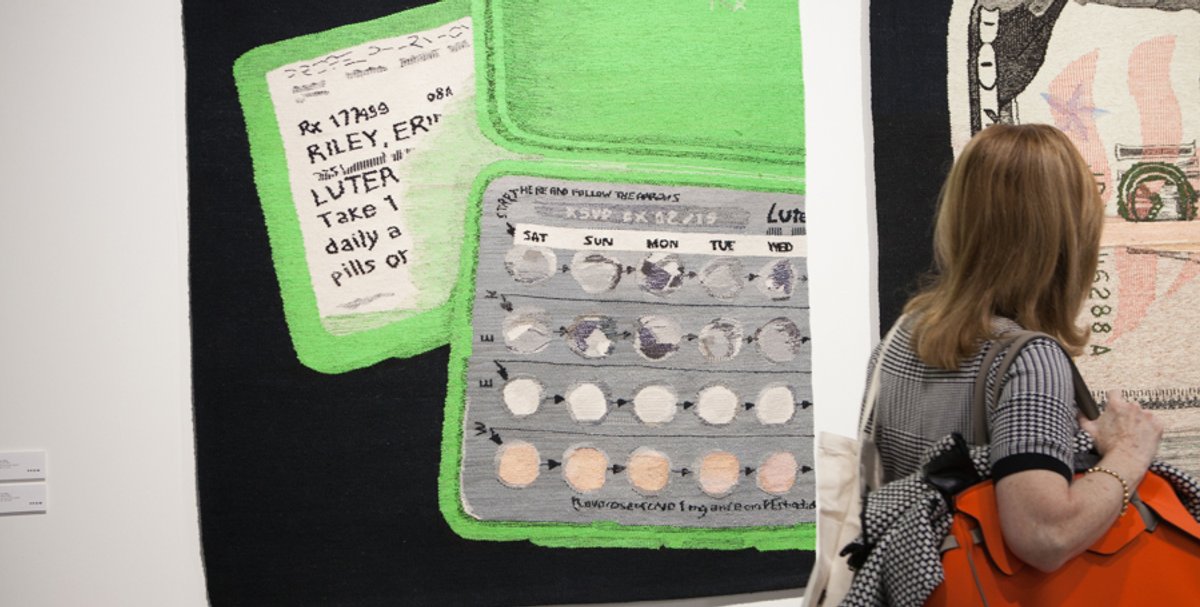
Erin Riley, The Pill, 2018, shown by PPOW Photo: © Vanessa Ruiz


